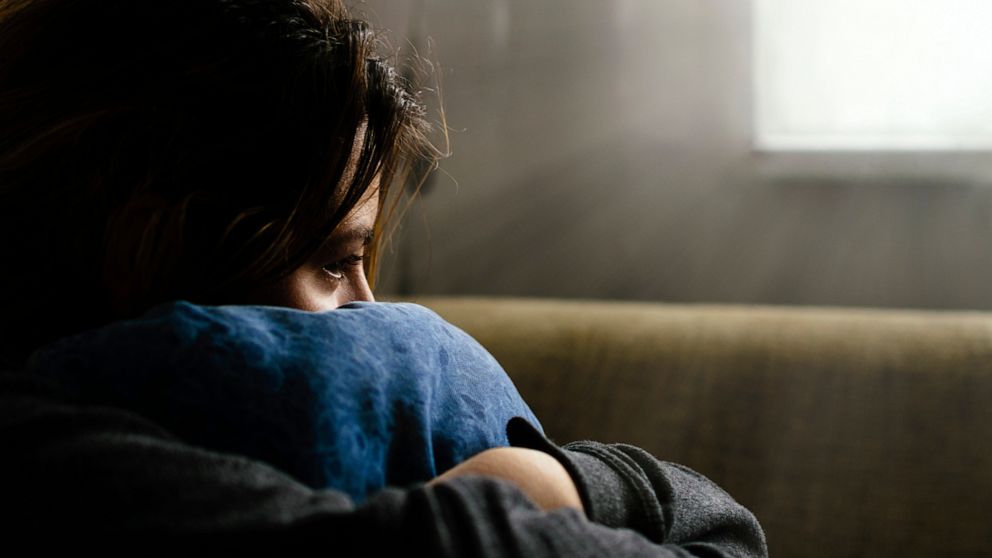Coping with the loss of a loved one by suicide: 6 steps survivors can take
ABC News Chief Medical Correspondent Dr. Jennifer Ashton has released her book, "Life After Suicide: Finding Courage, Comfort & Community After Unthinkable Loss." In it, she shares her personal journey of coping after the shocking death by suicide of her ex-husband Rob, finding the strength to support her children, and addressing what comes next for survivors after losing a loved one.
Complementing her book is “Surviving the Suicide of a Loved One,” a companion guide created by Everyday Health that offers valuable tools for dealing with grief, signs to recognize in those who have lost a loved one, and other information for survivors and their support system.
Katie Hurley, a licensed clinical social worker, and a child and adolescent psychotherapist in Los Angeles, is the guide’s contributing writer. Hurley spoke to “Good Morning America” to offer additional insight and information for those who may have lost a loved one to suicide, or are looking to support someone who is experiencing that grief. What follows are steps that can be taken by both to help cope, address the stigma of suicide and heal from a traumatic experience.
1. Know that it’s not your fault

Many who have lost a loved one to suicide experience survivor's guilt, a feeling that they are to blame.
“We don’t ever get to know why someone took their own life and that’s really hard,” Hurley says. “Even if a note is left, it doesn’t really give us closure.”
Everyday occurrences may trigger thoughts of “What if I made that phone call?” or “What if I didn’t start that fight?” But as Everyday Health’s guide points out, it’s important to remember these thoughts likely don’t paint an accurate or complete picture of the situation.
One recommendation is to remind you that “I am not responsible for my loved one’s suicide” is to make a list of the ways in which you did support them and to keep it handy whenever “what ifs?” arise.
“We can relieve ourselves of some of that blame by looking at something that reminds us, ‘Here’s what I did to help them along the way,’” Hurley says, adding that writing out a list can be a therapeutic practice.
2. Know that the shock will lessen over time
Shock is inevitable upon learning of the loss of a loved one by suicide, but for some, it can be crippling to daily routines and health.
“When we go into shock, we almost walk through the world like a skeleton of who we are,” Hurley says. “We might still be doing some daily tasks, but when the shock subsides, the dishes are piling up, the fridge is empty, you can’t remember to go to [the] store...that’s when the overwhelming begins.”
Everyday Health’s guide states that those who receive traumatic information may also find activities such as eating, showering and sleeping tough to accomplish or maintain with regularity.
Shock can also lead to the weakening of natural defenses, putting one at risk for illnesses.
It’s important to be cognizant of these factors, but shock will likely affect you less over time as you progress in your grief. Recognizing that frame of time will vary for each individual.
As such, it’s important to call your doctor should the feelings persist and continue to affect your everyday schedule.
3. Rely on your support system

Coping with any type of loss can be a challenge, but a loss by suicide may be more complex given the stigma attached.
As a result, survivors may feel more alone in their grief.
A strategy for coping with tragedy could include seeking help from your support system.
Everyday Health’s guide suggests thinking about family and close friends who may be willing and able to help you out, and then expanding to others who have been supportive of you in the past, such as work colleagues, your faith-based community, the parents of your children’s friends, etc.
In the long or the short term, they may offer you a listening ear, or they may be helpful with day-to-day tasks you find challenging to accomplish after trauma.
Though some people may feel they’re being a burden on their support system, survivors can feel less alone and more on track with daily tasks by asking for and being willing to receive the help they need.
4. Seek counseling
While learning to cope with the loss of a loved one, Hurley recommends seeking counseling. Looking for solace at your house of worship is also an option.
“A good first step for those who are resistant to therapy is to go somewhere where they feel at home,” Hurley says of seeking counseling at your church, mosque, synagogue or other holy place. She also notes that survivors may find comfort seeking counsel from a familiar face and with principles of faith integrated into their therapy.
Everyday Health’s guide notes that not all pastoral counselors are licensed mental health providers, so it is worth consulting with a specialist to address related concerns.
Additionally, while it may be difficult to open up to a complete stranger, Hurley says that seeking counseling from groups or specialists who focus on specific demographics or circumstances can also help a survivor cope.
5. Tackling the stigma

The topic of suicide is one that can immediately make people uncomfortable. Unfortunately, much of the stress of destigmatizing it falls to the loved ones who have lost someone.
“It never ends,” Hurley says. “When I say I had someone very close to me die by suicide, people stare at me like I ruined the party.”
Hurley recommends being prepared for people’s discomfort, and making a script that they can practice saying in the mirror over and over again so the word suicide becomes more normal, and they feel able to share their story with others.
To that point, according to the Everyday Health guide, when sharing a story, “Using the right language is key. The expression ‘commit suicide’ gives the impression that the suicide was done with intention or purpose. Describing the loss of your loved one as ‘died by suicide’ or ‘death by suicide’ removes the inference of intent, purpose, or blame.”
Additionally, Hurley says that if people don’t know how to respond, survivors have the right to turn away from those situations and recognize they’re not obligated to deal with an added layer of stress. In fact, she says, simply saying “I’m so sorry” to a survivor can show support.
“It’s not our job as survivors to end stigma and [I] don’t want survivors of the world to feel it’s their job to take on that cause,” Hurley says.
6. Show support
There are many ways to show support to a survivor, from simply listening to offering help such as providing them a ride, returning calls or helping them schedule appointments, even if they don’t ask for it.
And, Hurley says, it can be helpful to allow survivors to talk openly about suicide.
“Acknowledge it, say, ‘I don’t know what to say but how can I help?’” she says.
A survivor’s support system should also pay attention to what a survivor is saying. Are they communicating feelings of hopelessness or unbearable emotional pain that go beyond the depression, isolation, confusion and anger that come from the initial shock? If so, they should be encouraged to get them help from a professional mental health practitioner to help cope with their grief following a suicide.
Proceeds from the sales of the "Life After Suicide" will be donated to Vibrant Emotional Health, which administers the National Suicide Prevention Lifeline and other programs related to crisis response and emotional well-being, and the American Foundation for Suicide Prevention.
If you or someone you know needs to talk, call 1-800-273-TALK (8255).
If a person says they are considering suicide:
"Life After Suicide: Finding Courage, Comfort & Community After Unthinkable Loss" is available on May 7.







